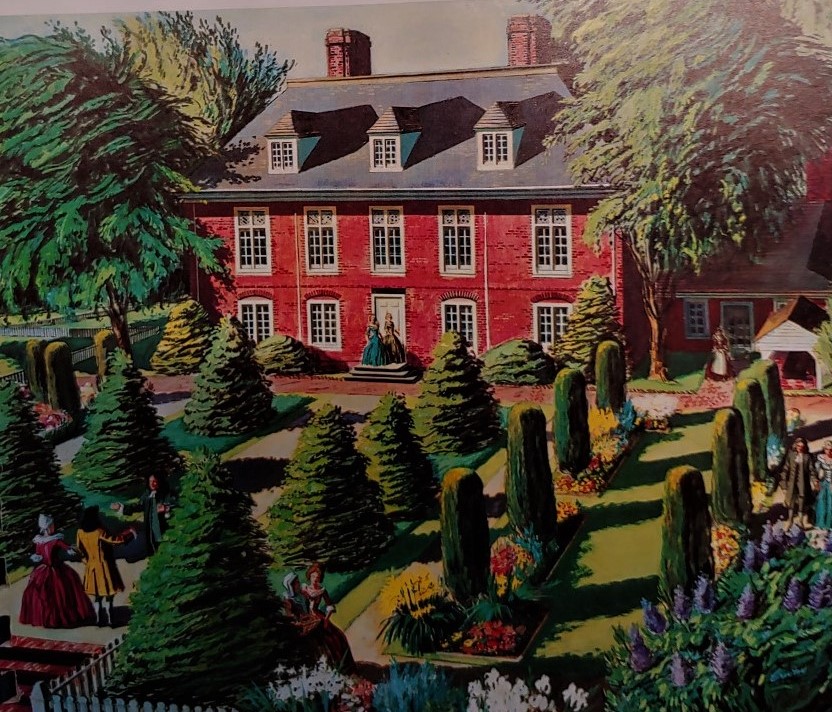She never lived to see the fairytale home William Penn built for her in Bucks County.
A visit to Pennsbury Manor in Falls is to project yourself back to 1699. That’s when William and Hannah Penn moved into their three-story, brick mansion overlooking the Delaware River. Aside from administering Pennsylvania as its founder, Penn planned every detail of his estate, especially the elegant mansion built for another woman.
Gulielma Maria Springett.
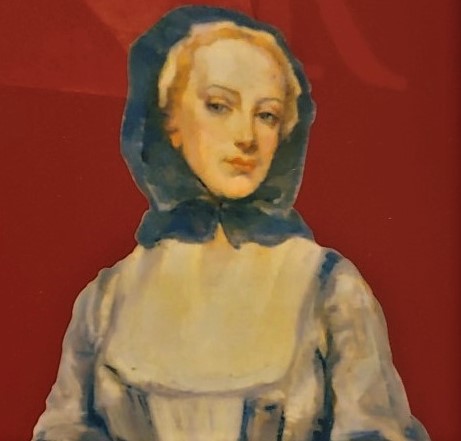
Gulielma – pronounced Goo-lee-EL-ma – was born in 1644 in London two months after her lawyer father died in battle as an English knight at age 23. She grew up wealthy and extraordinarily beautiful with golden tresses, attracting many suitors. Thomas Ellwood was one of them. He confessed to having “sparklings of desire” whenever near “Guli” as her family and friends called her. She was “in all respects a very desirable woman,” wrote Tom, noting the “sweetness of her natural temper.” Others were drawn to Guli’s effervescent spirit that, as one put it, “enchants all around her.”
Unfortunately for Tom, Guli had eyes for another. It was handsome William Penn, the rich and influential son of a British admiral. William, like Guli, had joined the Society of Friends, a fundamentalist Puritan religious sect. Engaged to be married, both were active in the growing Quaker movement disavowed by daddy Penn. As a budding evangelist who traveled widely, William used his family’s influence in government circles to rescue persecuted religious minorities in England, Ireland, France, Holland and Germany. His writings including “No Cross, No Crown” agitated the king resulting in Penn’s intermittent detention in the Tower of London.

That only made the bond between William and Guli stronger. After four years, they married in 1672. She was 28, he 27. Over the next nine years, she bore him six children as he pondered dreams of a religiously tolerant society. In 1681 he suggested to King Charles II a mass emigration of Quakers to North America would relieve him of domestic upheaval. King Charlie agreed, giving the upstart a generous 45,000-square-mile colony. But he insisted it be called Pennsylvania after Papa Penn. In return, William absolved Charlie of his $3.3 million debt to the deceased admiral.
Leaving Guli and the kids behind, William sailed away to establish a government in his colony. He sent cousin William Markham ahead to negotiate purchase of a family estate from Native Americans. Markham met with Lenni Lenape chiefs at the Gray Stones outcropping (in present day Morrisville) to formalize Pennsylvania’s first deed. The boundary enclosed today’s Morrisville, Lower Makefield, Yardley, Newtown Borough and Township, Middletown, Langhorne, Langhorne Manor, Penndel, Hulmeville, Bristol Borough and Township, Tullytown and Falls. In return, the tribe received nearly a half-mile of beads, 300 gold coins, 20 white blankets, 360 feet of coarse woolen fabric, 20 kettles, 20 guns, 20 coats, 40 shirts, pipes, scissors, shoes, combs, hoes, tobacco, knives, and 20 gallons of rum, cider and beer.
Work began at once to build a mansion on an old Indian field called “Sepassink” on the Delaware opposite today’s Roebling, N.J. With the estate taking shape after two years, Penn appointed an overseer while he returned to England to fetch his family and resolve legal issues. From afar, he sent an endless stream of instructions. Spacious rooms with wide doorways. Many casement windows to view the countryside. A great hall to host large delegations. A dining room with long table for serving beef, mutton, pork, smoked shad, Indian corn, English peas, imported wine and home-made ale. Orchards with a peach tree planted between every pair of apples. Herb gardens. A promenade from the front door lined with poplars leading to the river and the family’s boat. Outbuildings to include a kitchen, two larders, a wash house and room to iron in. A brew and bake house. A stable for twelve horses. Also a 5-mile scenic walkway from the house to Gray Stones.
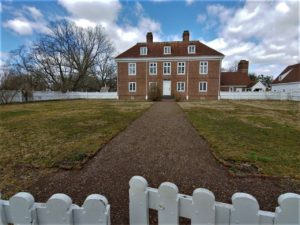
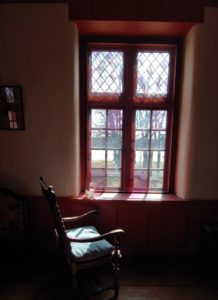
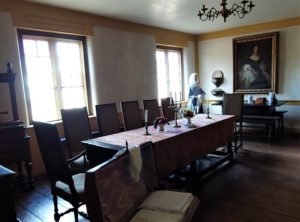
Unfortunately, political upheaval in England detained Penn for 15 years. During that time authorities suspected him of treason, leading to severe interrogation and detentions. All the while he and Guli dreamed of sailing away to Pennsbury Manor. But then she became gravely ill, leaving him a man of “constant sorrows,” as he put it. On her deathbed she said to him, “I never did, to my knowledge, a wicked thing in all my life.” Penn noted, “She quietly expired in my arms, her head upon my bosom, with a sensible and devout resignation of her soul to Almighty God.”
Penn, 55, returned to Pennsylvania six year later in 1691 with second wife Hannah, 28, and his daughter Letitia, 21, born to Gulielma. Both hated Pennsbury. Too isolated. “I cannot prevail on my wife to stay, and less with Tische,” said Penn. After two years, all three sailed back to England, never to return.
Sources include “The Papers of William Penn” (5 volumes) edited by Mary Maples Dunn published between 1981-87 by the University of Pennsylvania Press; “Pennsbury Manor Furnishing Plan” by Clare Lise Caviechi, former curator of Pennsbury Manor, published by the Pennsbury Society in 1988, and “The Grave of William Penn” by Alfred T. Story published in 1881 by Harpers.

